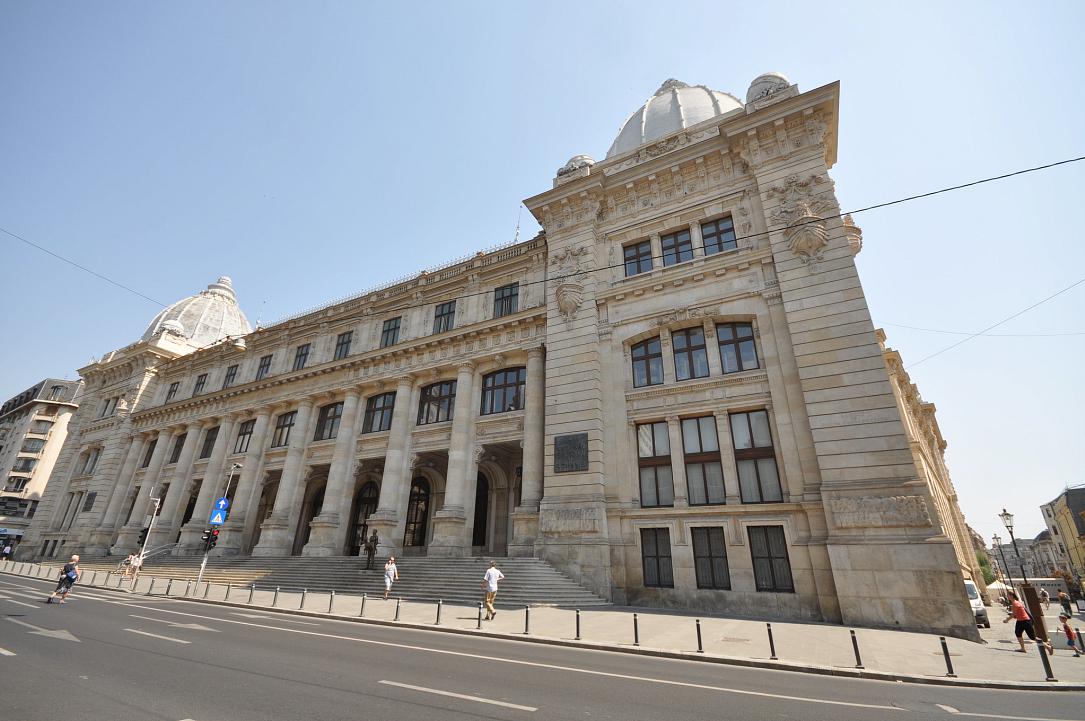This is native content supported by Hotel Cismigiu.
Bucharest Old Town Highlights: The National History Museum - the home of Romania’s precious treasures

As you walk on Victoriei Avenue in Bucharest, one cannot miss one of the most imposing and remarkable Neo-Classical buildings in the capital - the Romanian National History Museum, the home to some of Romania's greatest possessions, as it keeps important historical artifacts from prehistoric times up to modern times.
Established at the end of the 19th century near the former inn Constantin Vodă, which burnt down in the great fire that overtook Bucharest in the mid-19th-century, the building initial plan was meant to be a Justice Palace. The lack of funding ended the project, and the land remained empty for many years. During that period the plot hosted several barracks, one of which became the Alcazar theater, known for the stage where famous actors such as Matei Millo and Aristița Romanescu used to perform. Later on, a circus took its place around 1870. The idea to build a Postal Palace there came 20 years later.
After traveling to several cities in Europe to see how their postal buildings looked like, in order to design the Romanian one, Romanian architect Alexandru Săvulescu designed the Palace based on the Genève postal building. The construction work took six years, and the Palace was officially opened at the turn of the 19th century.
The building has four floors, an imposing row of long steps covering its entire façade and 10 Doric columns. The building sports two beautifully decorated cupolas at its extremities, and on the façade are found two statues, one representing Mercury, the messenger of gods, and the other one depicting Mecanica – or the progress of science. The building used to have other smaller, allegoric statues, that were either destroyed in the 1940 and 1977 earthquakes or demolished to protect passers-by.
After hosting the Bucharest’s main postal office, in 1970 renovation works started after it was seriously affected by the 1940 earthquake. Two years later, the museum opened, and it was considered the biggest institution of this kind in Romania. It brought under one roof the most important items from Romania’s past, which attracted, even at the time, many Romanian and foreign visitors.
Today, the museum has three permanent exhibitions: the historical thesaurus, the Lapidarium and a replica of the Trajan Column, while its central area often hosts temporary exhibitions. The historic treasury hosts some of the most representative items for Romania’s history, in total, 3,000 such items. Some of the most representative of them include pre-historic and antique artifacts – such as the Hamangia thinker – famous Dacian bracelets, religious objects from various periods, important documents – such as the flying brevet of famous Romanian inventor Aurel Vlaicu, official Romanian king portraits in original, gold and silver coins, as well as royal jewelry – with a highlight on the gold crowns of four late kings and queens of Romania - and items made by famous jewelers, such as Cartier.
How to get there:
The National Museum of History (MNIR) is located at 12 Victoriei Avenue (Calea Victoriei), within a walking distance to Cismigiu Hotel on Regina Elisabeta Boulevard. Visiting schedule for the museum: Wednesday to Sunday, between 10 AM - 6 PM. The ticket desk closes at 5.15 PM. Piața Universității is the closes metro station. Guidance is available in English and in French for groups of up to 25 people.
This is native content supported by Hotel Cismigiu.















